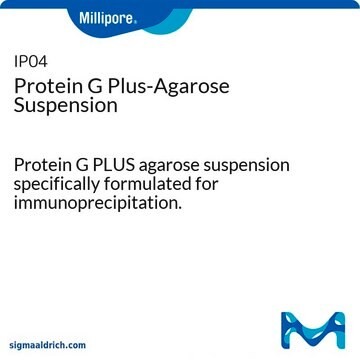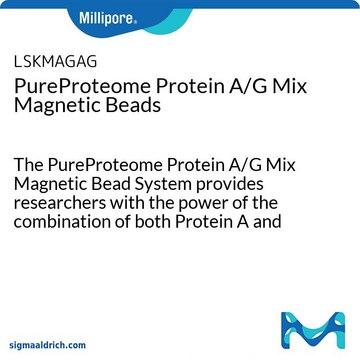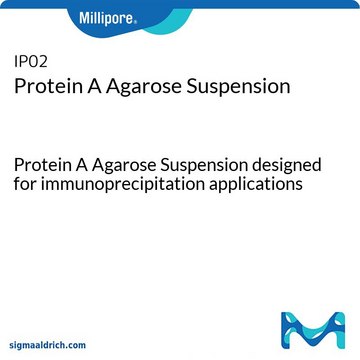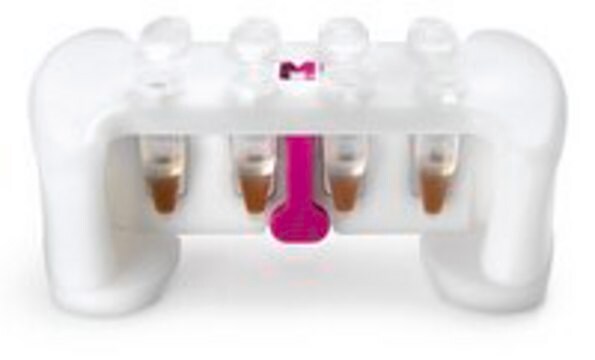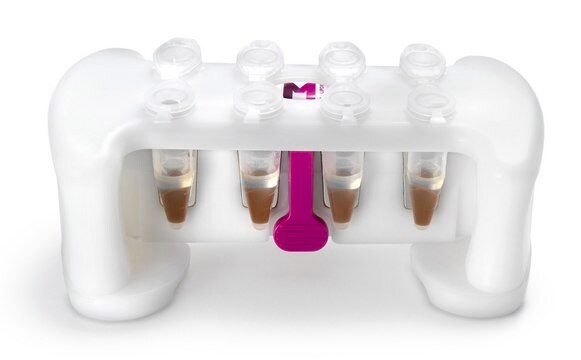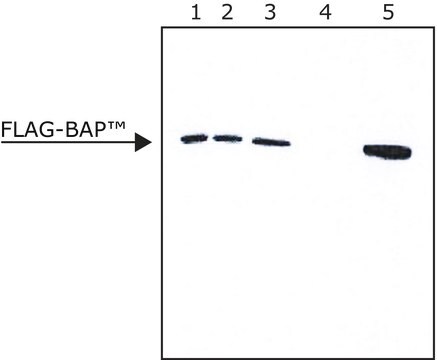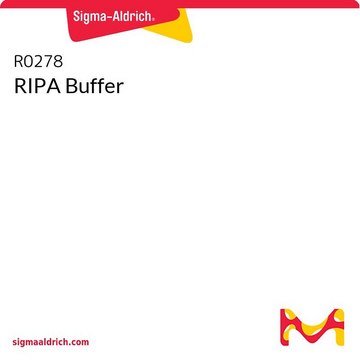IP05
Protein G Plus/Protein A Agarose Suspension
Protein G PLUS/Protein A-Agarose mixture specifically formulated for immunoprecipitation.
Synonym(s):
Affinity resin, Protein G/Agarose
Sign Into View Organizational & Contract Pricing
All Photos(1)
About This Item
UNSPSC Code:
41116133
NACRES:
NA.56
Recommended Products
form
slurry (Liquid)
contains
≤0.1% sodium azide as preservative
manufacturer/tradename
Calbiochem®
storage condition
do not freeze
technique(s)
protein purification: suitable
suitability
suitable for microbiology
shipped in
wet ice
storage temp.
2-8°C
General description
Designed for immunoprecipitation applications. This product is blocked with BSA to reduce non-specific binding and cannot be used for purification.
Protein G PLUS/Protein A-Agarose mixture specifically formulated for immunoprecipitation.
Application
Immunoprecipitation (see comments)
Warning
Toxicity: Standard Handling (A)
Physical form
33% slurry in PBS.
Other Notes
Agarose solution is supplied ready to use. Protein G Plus/Protein A Agarose immunoprecipitation reagent is blocked with BSA and should not be used for immunoglobulin purification or covalent cross-linking. For immunoprecipitation reactions 15 µl of solution per µg primary antibody is recommended. Preclearing will minimize extra bands resulting from nonspecific precipitation. To preclear, add to the sample 20 µl of agarose conjugate and 1 µg of normal IgG from the same species as the immunoprecipitating antibody. When immunoblotting is used for detection, some secondary antibodies can react nonspecifically with BSA or other proteins present at high concentrations in the sample. This can be eliminated by reducing the concentration of secondary antibody.
Legal Information
CALBIOCHEM is a registered trademark of Merck KGaA, Darmstadt, Germany
Storage Class Code
11 - Combustible Solids
WGK
WGK 1
Flash Point(F)
Not applicable
Flash Point(C)
Not applicable
Certificates of Analysis (COA)
Search for Certificates of Analysis (COA) by entering the products Lot/Batch Number. Lot and Batch Numbers can be found on a product’s label following the words ‘Lot’ or ‘Batch’.
Already Own This Product?
Find documentation for the products that you have recently purchased in the Document Library.
Customers Also Viewed
Ji Hyun Shin et al.
Autophagy, 15(9), 1495-1505 (2019-03-02)
Several studies have shown that dysfunction of macroautophagy/autophagy is associated with many human diseases, including neurodegenerative disease and cancer. To explore the molecular mechanisms of autophagy, we performed a cell-based functional screening with SH-SY5Y cells stably expressing GFP-LC3, using an
Lixuan Zhan et al.
Journal of neuroinflammation, 18(1), 97-97 (2021-04-22)
Our previous study indicated that hypoxic preconditioning reduced receptor interacting protein (RIP) 3-mediated necroptotic neuronal death in hippocampal CA1 of adult rats after transient global cerebral ischemia (tGCI). Although mixed lineage kinase domain-like (MLKL) has emerged as a crucial molecule
F Santiago et al.
Journal of virology, 73(12), 9917-9927 (1999-11-13)
Human T-cell leukemia virus type 1 (HTLV-1) is the etiologic agent for adult T-cell leukemia/lymphoma (ATL) and HTLV-1-associated myelopathy/tropical spastic paraparesis. Tax(1) is a 40-kDa phosphoprotein, predominantly localized in the nucleus of the host cell, which functions to transactivate both
Abdulaziz Asiri et al.
Pathology international, 69(7), 381-391 (2019-07-11)
Cten is an oncogene promoting EMT in many signaling pathways, namely through Snail. We investigated whether Cten function could be mediated through Src. Cten levels were modulated by forced expression in HCT116 and gene knockdown in SW620 CRC (colorectal cancer)
Bin Tang et al.
Disease markers, 2022, 9087190-9087190 (2022-04-23)
To explore the regulatory effect of ubiquitin specific protease 25 (USP25) on glioma cell proliferation, migration, invasion, and its underlying mechanism. The USP25-overexpressed and USP25-knockdown glioma cells were established on U251 and U87 cells, respectively. Glioma cell proliferation ability was
Our team of scientists has experience in all areas of research including Life Science, Material Science, Chemical Synthesis, Chromatography, Analytical and many others.
Contact Technical Service
